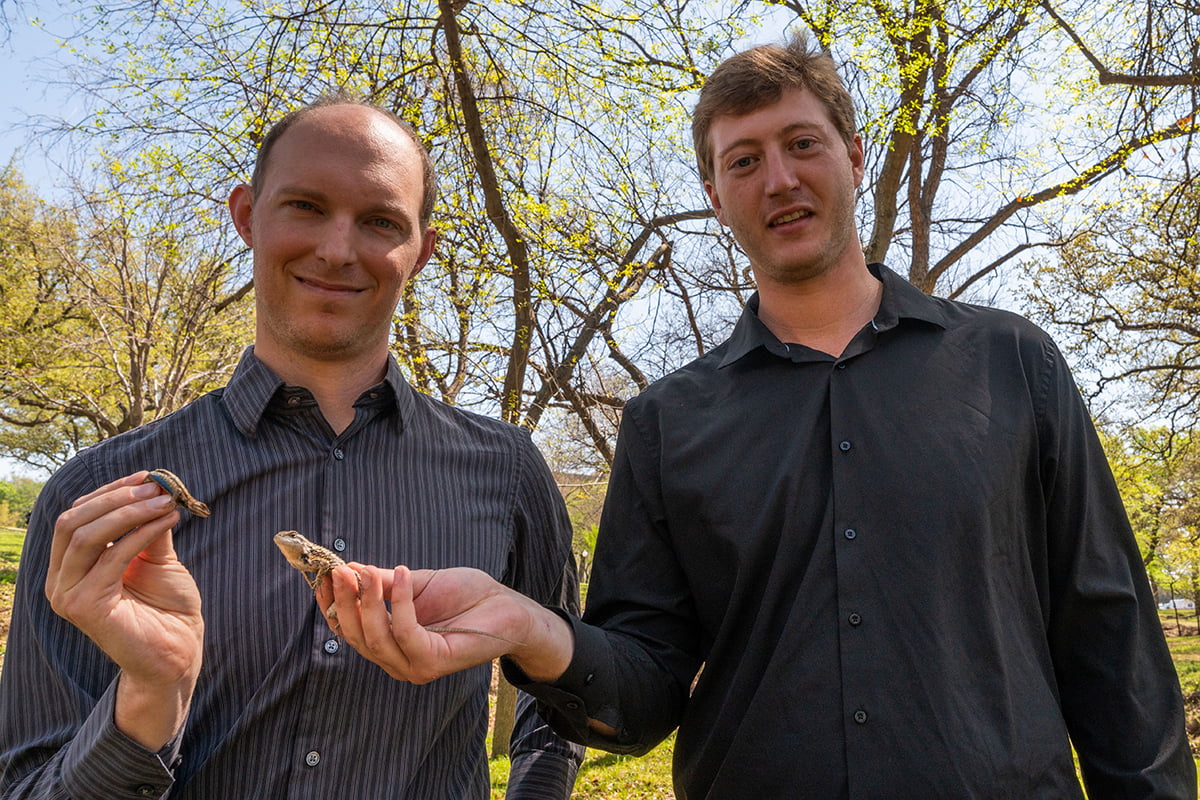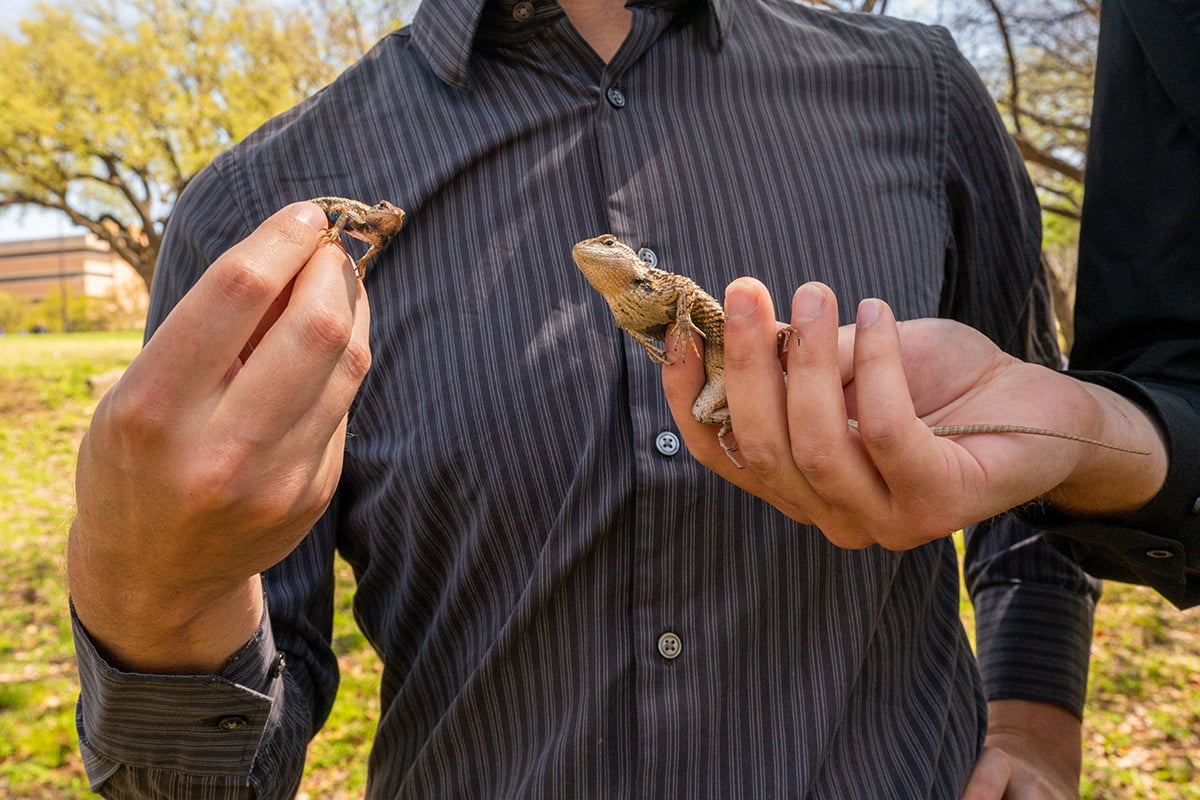In Texas, two lizards battle for territory

Fifty years ago, the Fort Worth Nature Center & Refuge overflowed with prairie lizards. Today, the species can’t be found there.
Prairie lizards are retreating from Texas landscapes, apparently bullied from their habitats by the rival Texas spiny lizard, suggests an ongoing study by biologists at The University of Texas at Arlington.
In the competition for resources, the Texas spiny lizard is dominating the prairie lizard, triggering the latter species’ redistribution across the state, according to research conducted by Alexander Murray, fourth-year doctoral student, and Luke Frishkoff, assistant professor of biology.
“Historically, prairie lizards enjoyed a nearly statewide distribution, but that is no longer true,” Murray said. “Their population has declined significantly.”
In the search for a cause, Murray and Frishkoff narrowed their focus to the prairie lizard’s top competitor, the behemoth Texas spiny lizard, and discovered a tense relationship between the species.
When the lizards meet, the Texas spiny lizard exhibits aggressive behavior, chasing the terrified prairie lizard from its territory. The two species have similar preferences in vegetation, temperature and rainfall—presumably making the same regions and conditions attractive to them. But more than 200 population surveys conducted by Murray throughout Texas reveal that the prairie lizard avoids areas inhabited by the Texas spiny lizard.

“We are witnessing a behavioral change, where the prairie lizards now stay away from habitats that they previously enjoyed,” Murray said. “Areas that could be suitable homes for prairie lizards usually don’t contain any if there are Texas spiny lizards present.”
For Frishkoff, the lizard rivalry is an example of how extinctions can unfold.
“For whatever reason, conditions have become quite favorable for the Texas spiny lizard, and its population is on the rise,” Frishkoff said. “As a result, we are observing the drastic decline of its weaker competitor. Will the prairie lizard adapt and learn to live with the Texas spiny lizard, or could it be threatened with extinction wherever its competitor establishes?”